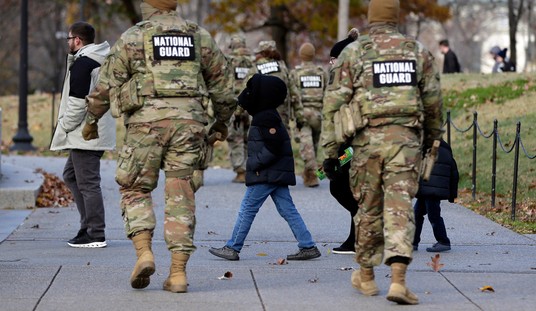The good news: The latest results from Quinnipiac show Republicans leading or at least not trailing in four states that Democrats thought they could win in this presidential cycle. The bad news: At least two of those four races have noticeably tightened, and one has tied since the last iteration. While Ohio and Pennsylvania have improved, Florida and especially North Carolina have fallen back into the risk column:
Republican U.S. Sen. Marco Rubio is on the plus side of a too-close-to-call reelection battle in Florida, while GOP incumbent Senators in Ohio and Pennsylvania enjoy wider leads, according to a Quinnipiac University Swing State Poll released today.
In North Carolina, the U.S. Senate race is locked in a dead heat while the governor’s race is too close to call, with State Attorney General Roy Cooper, the Democratic challenger, at 48 percent and Republican incumbent Gov. Pat McCrory at 46 percent. This compares to a 51 – 44 percent Cooper lead in a September 9 survey by the independent Quinnipiac (KWIN-uh-pe-ack) University.
U.S. Senate matchups show:
- Florida: Rubio at 48 percent with Murphy at 44 percent, compared to a 50 – 43 percent Rubio lead September 9;
- North Carolina: Republican incumbent Sen. Richard Burr and Democratic challenger Deborah Ross tied 46 – 46 percent, compared to a 49 – 43 percent Burr lead September 9;
- Ohio: GOP incumbent Sen. Rob Portman leads former Gov. Ted Strickland, his Democratic challenger, 55 – 38 percent, up from a 51 – 40 percent Portman lead last month;
- Pennsylvania: Republican incumbent Sen. Pat Toomey leads Democratic challenger Katie McGinty 50 – 42 percent, compared to September 9, when he had 46 percent to McGinty’s 45 percent.
“It looks like the battle to control the U.S. Senate will go down to the campaign’s final days. The races in North Carolina, Florida and Pennsylvania could decide the matter,” said Peter A. Brown, assistant director of the Quinnipiac University Poll.
Who would have guessed that Republicans would have to worry more about Florida and North Carolina than Ohio and Pennsylvania? Democrats thought they had fairly easy entrées into both Rust Belt seats in the Senate, but a combination of poor candidates and populist appeal seems to have doomed them. The Ohio race has long been considered over, of course, as Strickland has melted down and appears irretrievable.
The Pennsylvania race may not be as solid as this suggests, though. Quinnipiac might be picking up on a late trend, but even with this result, McGinty still has a slight edge in the RCP average of 0.6 points. Monmouth polled in the same period and came up with a tie at 46, which would still be better news from Toomey than he got from CNN, Gravis, and F&M over the last two weeks. Right now the Q-poll looks like an outlier, but who knows? Maybe the ground is shifting in PA.
Florida looks a bit off in the other direction. The Q-poll matches up with an Opinion Savvy poll conducted for a local Fox affiliate last week, but Mason-Dixon has Rubio up 7 and Suffolk has him up nine points. One key takeaway from RCP’s recent aggregation — only one poll has Rubio below 45 points, and no poll has Murphy above 45 points. Rubio may not have a wide gap, but it’s significant in every poll.
That brings us to North Carolina, a rave over which Republicans have fretted for a few weeks. The Q-poll result falls right into line with the virtual tie at RCP, so it’s worth digging into the internals — not that there are much. One point jumps out: Ross and Burr hold about the same percentage of voters in their own party, and Burr leads independents 47/40. The 2012 turnout model was 39% Democrats and 33% Republicans with Obama at the top of the ticket, and Republicans still narrowly held on to win. In 2014, the turnout model was Democrat 36/35 in the Thom Tillis/Kay Hagan race, and the splits in each partisan group was almost identical to what we see in the internals here. Tillis held on for a two-point win over Hagan, a margin of over 49,000 votes. If this presidential race turns out a 2014 model rather than a 2012 model, then perhaps Burr has a little more cushion than the topline shows, but … only a little more.
In any case, Republicans have a lot more work to do in North Carolina and Pennsylvania, to be sure, and possibly in Florida. This isn’t a bad report, but it’s not a slam-dunk either.









Join the conversation as a VIP Member